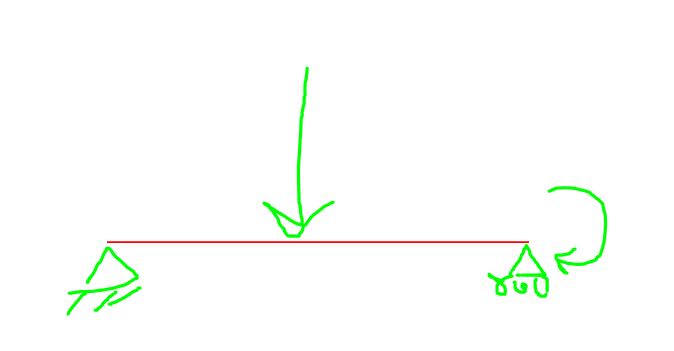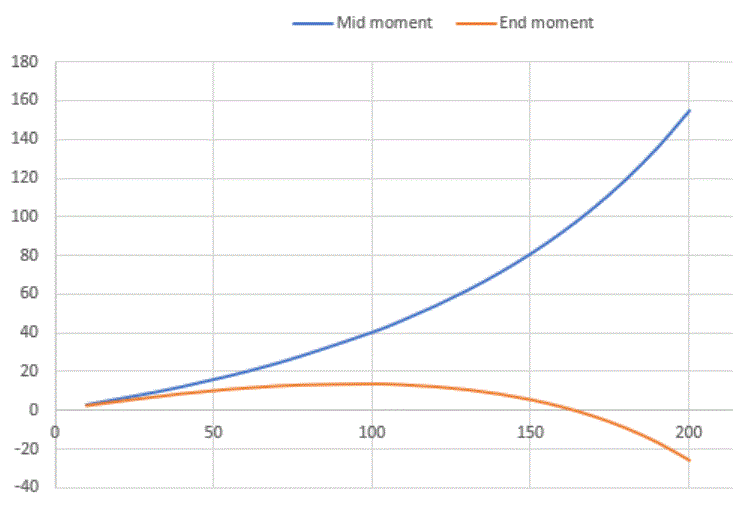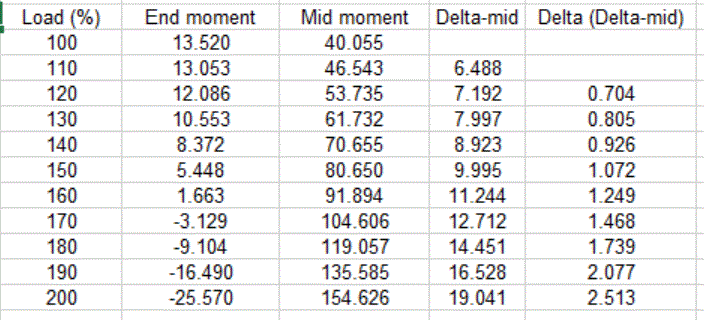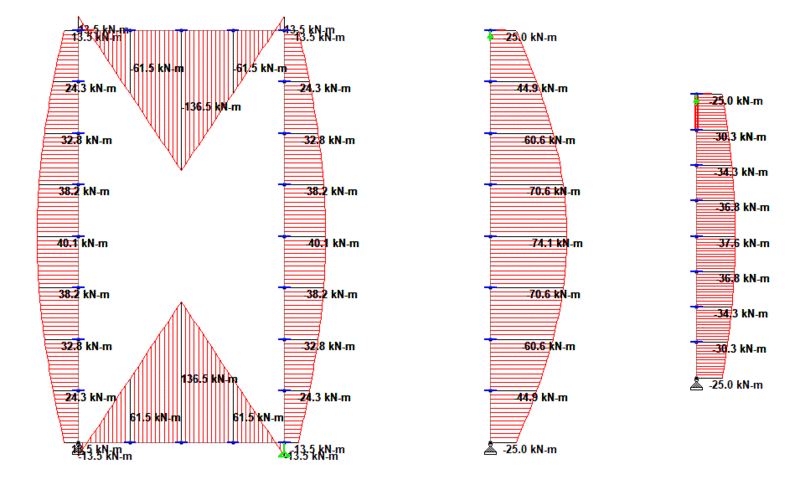steveh49 said:
I would say it can, by comparison to pinned column with eccentric loads (eg cantilever beam) which deliver the destabilizing moments without any restraint due to the joint stiffness. K<1.
K<1? Is that a misstype? For the cantilever case described, it should should be:
K = 1 for a bifurcation analysis on a column without imperfections and;
K > 1 for most other types of buckling analyses although, for those, the definition of K becomes admittedly fuzzy.
Moreover, I think that the point of maximum clockwise moment on the L-frame actually IS the transition point. You know how, with a plain, pin-pin column the Euler buckling load is the load at which the column is equally happy to buckle 6" to the right, 30" to the right, or 18" to the left? It's similar with the L-frame: at the transition point, the column is equally happy:
1) In single curvature at it's maximum CW end moment;
2) In double curvature at the maximum a CCW end moment that would keep the system in equilibrium at that load level;
3) An infinite number of points in between those extremes including the location where the end moment would be zero.
This is the nature of the column "buckling" in single curvature at the transition point before assuming it's progressing along to the K<1, double curvature buckling mode.
If I'm right about this, which will no doubt be disputed, it just makes the transition point all the more important and less arbitrary, yeah?






